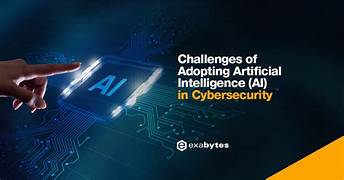The Challenges of AI in Detecting and Preventing Online Radicalization
In an age where the internet is a powerful tool for communication, education, and connection, it has also become a platform for malicious activities, including the spread of radical ideologies. Online radicalization—the process of influencing individuals to adopt extreme political, religious, or social beliefs—poses a significant threat to societal security. Artificial intelligence (AI) has emerged as a critical tool in addressing this issue, offering capabilities to detect, analyze, and combat radical content at scale.
However, employing AI to prevent online radicalization comes with its challenges. These include technical limitations, ethical dilemmas, and evolving strategies by radical groups. This article explores these challenges, their implications, and the potential ways forward.
Understanding Online Radicalization
Online radicalization often occurs through a combination of targeted messaging, social manipulation, and the exploitation of vulnerabilities. Extremist groups use platforms such as social media, forums, and encrypted messaging apps to:
- Disseminate propaganda.
- Recruit members.
- Plan and coordinate activities.
The covert and decentralized nature of these activities makes detection and prevention incredibly challenging, even for advanced AI systems.
The Role of AI in Countering Online Radicalization
AI technologies are used to identify and mitigate radicalization in several ways:
- Content Moderation: AI-powered algorithms scan and flag harmful or extremist content.
- Behavior Analysis: Machine learning models analyze user behavior patterns to detect signs of radicalization.
- Network Mapping: AI identifies networks of radical groups and their digital footprints.
- Sentiment Analysis: AI gauges the emotional tone of online discussions to detect rising hostility or extremism.
While these applications are promising, they face numerous obstacles.
Challenges in Detecting and Preventing Online Radicalization
1. Evolving Nature of Radical Content
Extremist groups continually adapt their tactics to evade detection:
- Code Words and Symbols: Radical groups use subtle language, memes, and symbols that are difficult for AI to interpret.
- Shifting Platforms: As major platforms enhance moderation efforts, extremists migrate to lesser-known or encrypted spaces.
- Cultural Contexts: The meanings of words and symbols often vary across cultures, making it harder for AI to maintain accuracy.
For example, certain innocuous phrases in one context may carry radical connotations in another, creating room for misinterpretation.
2. False Positives and Negatives
AI systems often struggle with accuracy when identifying extremist content:
- False Positives: Legitimate discussions about radicalization or sensitive topics may be flagged incorrectly, stifling free speech.
- False Negatives: Harmful content can slip through detection systems, allowing it to spread unchecked.
These errors can erode public trust in AI and reduce the effectiveness of intervention strategies.
3. Data Limitations
AI relies heavily on high-quality data for training and decision-making:
- Inadequate Training Data: The lack of comprehensive datasets covering all forms of radical content limits AI’s learning.
- Bias in Data: Datasets may reflect biases, leading to disproportionate targeting of certain groups or ideologies.
- Privacy Concerns: Collecting and analyzing user data for AI systems raises significant ethical and legal challenges.
Striking a balance between effective detection and respecting user privacy remains a critical hurdle.
4. Encrypted and Private Platforms
The increasing use of encrypted messaging apps and private forums by radical groups poses a significant challenge:
- Limited Access: AI systems often cannot penetrate encrypted platforms due to privacy protections.
- Dark Web Activity: The dark web serves as a haven for extremist content, operating beyond the reach of conventional AI tools.
Addressing these challenges requires collaboration with platform providers, but this often raises privacy and jurisdictional concerns.
5. Ethical and Legal Considerations
Deploying AI to combat online radicalization raises ethical dilemmas:
- Freedom of Expression: Excessive moderation may suppress legitimate discourse, infringing on individuals’ rights.
- Bias and Discrimination: AI systems may disproportionately target specific communities, leading to accusations of profiling.
- Transparency: The lack of clarity in how AI systems make decisions can fuel skepticism and resistance.
These issues necessitate careful regulation and oversight to ensure AI is used responsibly.
Potential Solutions and Strategies
Despite these challenges, there are ways to improve AI’s effectiveness in combating online radicalization:
1. Improving AI Training and Accuracy
- Expanding Datasets: Developing diverse and representative datasets can enhance AI’s ability to detect radical content accurately.
- Contextual Understanding: Incorporating natural language processing (NLP) models that understand context and cultural nuances can reduce false positives and negatives.
- Continuous Learning: AI systems should be updated regularly to adapt to evolving tactics used by extremist groups.
2. Strengthening Collaboration
- Industry Partnerships: Collaboration between tech companies, governments, and NGOs can lead to better tools and shared intelligence.
- User Involvement: Crowdsourcing moderation efforts by involving users in flagging suspicious content can complement AI systems.
- Global Frameworks: International cooperation is crucial to address cross-border radicalization and ensure consistent standards.
3. Balancing Privacy and Security
- Encrypted Systems: AI can be designed to analyze metadata without breaching user privacy, providing insights without direct surveillance.
- Regulatory Oversight: Clear guidelines on data collection and usage can build public trust and prevent misuse.
4. Focusing on Prevention
- Education and Awareness: AI can identify individuals at risk of radicalization and direct them to educational resources or counseling services.
- Counter-Narratives: AI systems can help create and promote content that challenges extremist ideologies and fosters critical thinking.
The Future of AI in Combating Online Radicalization
As AI technologies evolve, they hold great promise for addressing the complex challenge of online radicalization. However, their success depends on addressing the ethical, technical, and operational hurdles they face today.
Future advancements may include:
- Advanced NLP Models: Systems capable of detecting nuanced language and context.
- Real-Time Monitoring: Faster detection and response to emerging threats.
- Integrated Solutions: Combining AI with human expertise for a balanced approach.
By fostering innovation and collaboration while respecting ethical principles, AI can become a powerful ally in safeguarding societies against the threat of online radicalization.
Conclusion
The challenges of using AI to detect and prevent online radicalization are as complex as the problem itself. From the evolving tactics of extremist groups to ethical concerns and technological limitations, there is no one-size-fits-all solution. However, with continued investment in AI research, transparent governance, and collaborative efforts, these challenges can be mitigated.
AI’s potential to analyze vast data, detect patterns, and deliver actionable insights makes it an indispensable tool in this fight. By addressing its limitations and leveraging its strengths responsibly, we can harness AI to create a safer and more resilient digital environment for all.


